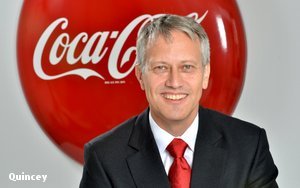
In 2016, more than ever, consumers equated “clean” and fresh ingredients with healthfulness. That, in turn, served to accelerate the strategic, portfolio and
marketing revolutions underway at food, beverages and restaurant brands and their parent companies.
Food and beverage CPG makers continued to snap up smaller — often fledgling
— companies offering popular but heretofore limited-in-scale organic, “all-natural” and “free-from” brands. If the products also offered the types of intense or exotic
flavors known to be catnip to Millennials, so much the better.
Predictably, articles related to those mega-trends dominated the most-shared and best-read stories among the many
hundreds authored by yours truly in covering the in-home and out-of-home consumables categories.
advertisement
advertisement
A prime case in point: mid-December’s news that Coca-Cola was pulling the
trigger on a new CEO, James Quincey, with current CEO Muhtar Kent transitioning to chairman of the board.
As Marketing Daily’s news article stressed, Quincey’s core challenge lies in “accelerating
Coca-Cola’s diversification beyond its core soda brands in the face of continuing soda sales declines and governmental moves in the U.S. and elsewhere to implement taxes aimed at curbing soda
consumption for health reasons.”
Other examples: Campbell’s launch of the Well Yes! canned soup brand (one of many recent clean/fresh product
launches and acquisitions for the company); and the launch of an organic line
by Kraft-distributed Capri Sun.
Leveraging New Platforms, E-Commerce
As with marketers in all categories, many well-known consumables brands also
demonstrated notable creativity in employing social media and a variety of new digital platforms.
Among the moves that grabbed Marketing Daily readers’ attention:
Panera led the list of restaurant brands that both reinvented their menus and got the word out with interesting digital campaigns. Panera got the ball rolling in January, introducing its new clean soups by offering fans the opportunity to have their
tweets about the soups incorporated in an "endless trailer" video.
Buffalo Wild Wings took advantage of geo-targeting tech with a March Madness campaign that offered college
basketball fans in 42 cities a free Uber ride to or from participating B-Dubs locations, through a promotion using the Uber app.
Also in March, ConAgra exemplified traditional
food CPGs’ efforts to diversify their sales channels by introducing Amazon Dash Buttons for Hunt’s tomatoes, Slim Jim meat snacks, Orville Redenbacher’s popcorn and David sunflower
seeds. All were the first Dash Button entries in their respective product categories.
Kellogg displayed its innovative thinking by opening a Millennial-friendly café, featuring its products, in New York
City’s Times Square. (Kellogg also stood up for companies’ right to advertise in media that reflect their values by announcing that it would ensure that its ads no longer appeared on the
right-wing Breitbart News site.)
Innovative Marketing, Launches Of Indulgent Foods
Even product launches from companies based on
“indulgent” brands featured “natural” and “free-from” claims — which didn’t necessarily make them any healthier in terms of sugar, fat and calorie
content.
At the same time, more snack and confections brands that are high in all three, but would likely stir a revolt if reformulated, introduced smaller-portion packaging
formats designed to ease the guilt factor by reducing the junk-calories intake (assuming you have the self-control to stop at one mini-bag).
Winning sales for these brands
from Millennials who are more health-minded for themselves and their children also calls for advertising and marketing efforts that appeal to their love of social and the latest technology, paired
with clever, amusing creative — and many brand marketers delivered.
Cheetos ran several innovative campaigns that won high interest among Marketing Daily readers
during 2016. Those included a social and digital contest that offered
significant cash prizes, as well as a place in an online “Cheetos Museum” for photo entries of Cheetos shaped like animals or other recognizable objects, or famous people, buildings or
landmarks.
Hershey diversified by entering the snacks business, and employed humorous police-themed TV spots in conjunction with digital advertising
and a dedicated "SnackPatrol" campaign Twitter channel. The company also debuted its first
Olympics campaign.
Meanwhile, Mondelez International, after being spurned in its attempt to acquire Hershey, took on its would-be paramour by introducing its Milka Oreo chocolate bars — already sold in more than 20
other countries — in the U.S.